
Henry Jaynes Fonda was an American actor whose career spanned five decades on Broadway and in Hollywood. On screen and stage, he often portrayed characters that embodied an everyman image.

George Robert Philips McFarland was an American actor most famous for starring as a child as Spanky in Hal Roach's Our Gang series of short-subject comedies of the 1930s and 1940s. The Our Gang shorts were later syndicated to television as The Little Rascals.

George Randolph Scott was an American film actor, whose Hollywood career spanned from 1928 to 1962. As a leading man for all but the first three years of his cinematic career, Scott appeared in dramas, comedies, musicals, adventures, war, horror and fantasy films, and Westerns. Out of his more than 100 film appearances, more than 60 of them were Westerns.

Samson and Delilah is a 1949 American romantic biblical drama film produced and directed by Cecil B. DeMille and released by Paramount Pictures. It depicts the biblical story of Samson, a strongman whose secret lies in his uncut hair, and his love for Delilah, the woman who seduces him, discovers his secret, and then betrays him to the Philistines. It stars Victor Mature and Hedy Lamarr in the title roles, George Sanders as the Saran, Angela Lansbury as Semadar, and Henry Wilcoxon as Prince Ahtur.

Sylvia Sidney was an American stage, screen, and film actress whose career spanned 70 years. She rose to prominence in dozens of leading roles in the 1930s. She was nominated for the Academy Award for Best Supporting Actress for her performance in Summer Wishes, Winter Dreams in 1973. She later gained attention for her role as Juno, a case worker in the afterlife, in Tim Burton's 1988 film Beetlejuice, for which she won a Saturn Award for Best Supporting Actress.

Henry Hathaway was an American film director and producer. He is best known as a director of Westerns, especially starring Randolph Scott and John Wayne. He directed Gary Cooper in seven films.
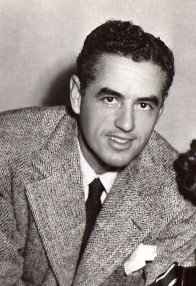
Lucien Ballard was an American cinematographer. He worked on more than 130 films during his 50-year career, collaborating multiple times with directors including Josef von Sternberg, John Brahm, Henry Hathaway, Budd Boetticher, Raoul Walsh, Sam Peckinpah and Tom Gries. He was nominated for an Academy Award for Best Cinematography for The Caretakers (1963).

John Fox Jr. was an American journalist, novelist, and short story writer.

The Trail of the Lonesome Pine is a 1908 romance novel/western novel by John Fox, Jr. The novel became Fox's most successful, and was included among the top ten list of bestselling novels for 1908 and 1909. It has been adapted numerous times for both stage and screen.
Ko-Ko Song Car-Tunes, Song Car-Tunes, or Sound Car-Tunes, is a series of short three-minute animated films produced by Max Fleischer and Dave Fleischer between May 1924 and September 1927, pioneering the use of the "Follow the Bouncing Ball" device used to lead audiences in theater sing-alongs. The Song Car-Tunes also pioneered the application of sound film to animation.

Kenneth Macgowan was an American film producer. He won an Academy Award for Best Color Short Film for La Cucaracha (1934), the first live-action short film made in the three-color Technicolor process.

Elisha Helm Calvert was an American film actor and director. He appeared in more than 170 films, as well as directing a further 60 titles.
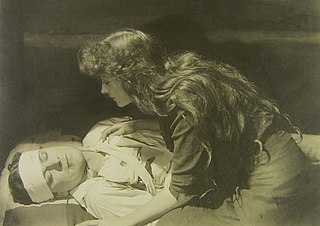
The Trail of the Lonesome Pine is a 1916 American silent drama film directed by Cecil B. DeMille, who also wrote the screenplay. Art direction for the film was done by Wilfred Buckland.

The Trail of the Lonesome Pine is a 1923 American silent Western film directed by Charles Maigne and starring Mary Miles Minter. It was adapted by Will M. Ritchey from the play and novel of the same name by John Fox Jr. This was the second time that Maigne had directed Minter in an adaptation of a Fox novel, the first being 1920's A Cumberland Romance. This was Minter's final film; her contract with Paramount Pictures was not renewed, and she stated that she was "through" with films. As with many of Minter's features, The Trail of the Lonesome Pine is thought to be a lost film.
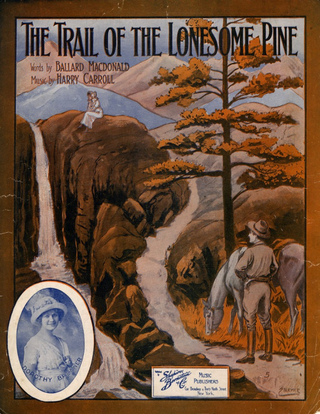
"The Trail of the Lonesome Pine" is a popular song published in 1913, with lyrics by Ballard MacDonald and music by Harry Carroll. It was inspired by John Fox Jr.'s 1908 novel of the same title, but whereas the novel was set in the Cumberland Mountains of Kentucky, the song refers to the Blue Ridge Mountains of Virginia. In it, the singer expresses his love for his girl, June, who is waiting for him under the titular pine tree. It was performed by Laurel and Hardy in the 1937 film Way Out West. This version became a UK Singles Chart hit in 1975, some years after both actors had died.

King of the Khyber Rifles is a 1953 adventure film directed by Henry King and starring Tyrone Power and Terry Moore. The film shares its title but little else with the novel King of the Khyber Rifles (1916) by Talbot Mundy. This novel was also the basis for John Ford's The Black Watch (1929). The Khyber Pass scenes were shot in the Alabama Hills, Lone Pine, California. Released by 20th Century Fox, the film was one of the first shot in Technicolor CinemaScope.
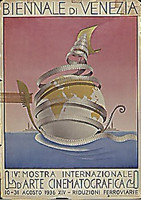
The 4th annual Venice International Film Festival was held between 10 and 31 August 1936. This year saw an international jury nominated for the first time.

Ebb Tide is a 1937 American Technicolor adventure film directed by James P. Hogan and starring Oscar Homolka, Frances Farmer and Ray Milland.
Robert William Bischoff was an American film editor. In a career that lasted from the mid-1920s until his World War II service with U.S. Navy in 1943, he worked on over 30 films for Fox Film Corporation and then continued with 20th Century Fox. He died at the end of the war in Europe while still serving in the Navy.
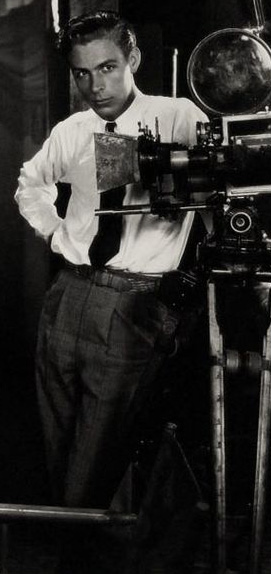
Edward Cronjager was an American cinematographer whose career spanned from the silent era through the 1950s. He came from a family of cinematographers, with his father, uncle, and brother all working in the film industry behind the camera. His work covered over 100 films and included projects on the small screen towards the end of his career. He filmed in black and white and color mediums, and his work received nominations for seven Academy Awards over three decades, although he never won the statue.


















